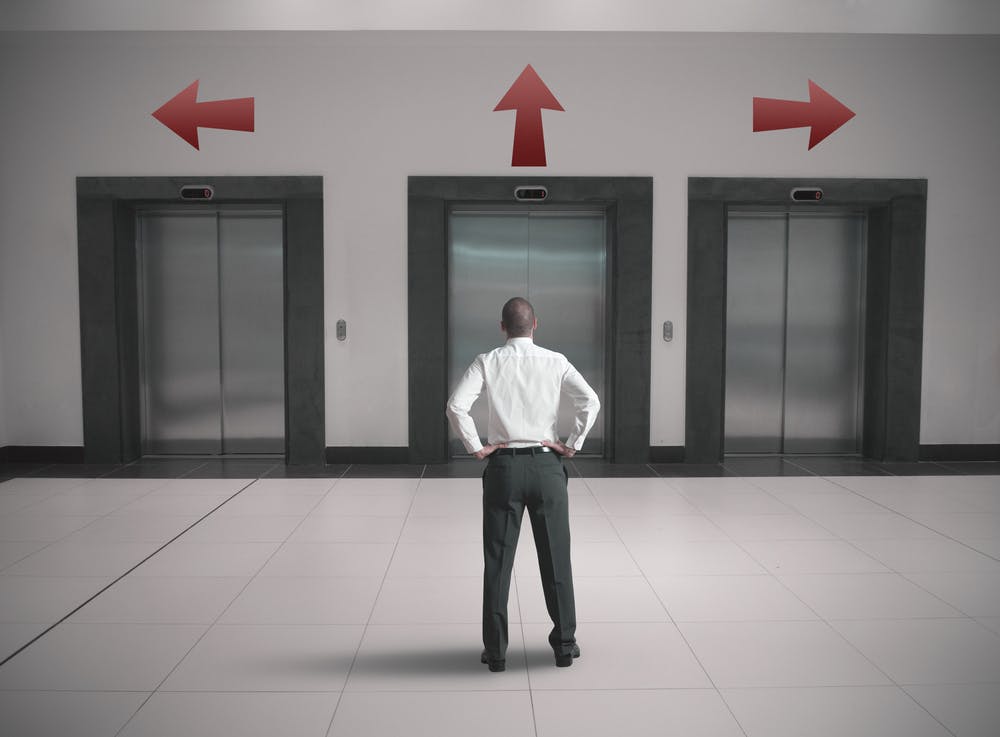It is no surprise that job-hopping has become the new normal for millennials. A recent Gallup poll found that 21% of millennials report changing jobs within the last year, which is more than three times the number of non-millennials. According to millennials, the top consideration when applying for a job is the opportunity to learn and grow.
But that appetite to try something new can be hurtful to companies if talented workers jump ship in search of fresh adventure and learning opportunities. The answer? Encouraging lateral movement allows employees to develop professionally and can positively impact retention rates for the company. It’s a win-win for everyone.
Benefits
Sparta Systems embarked on an accelerated growth strategy in 2011, and as a result placed additional emphasis on lateral movement. While a main priority was to keep organizational structure as flat as possible to reduce bureaucracy and increase flexibility, there was a risk that employees could perceive fewer opportunities for promotion. By encouraging lateral movement, we are able to continuously engage employees and deliver against the accelerated growth strategy.
Lateral movement should be viewed as a strategic step in an employee’s career. Whether employees plan to move up the ladder or want to become masters in their field, the need is the same – they have to put themselves in a position to continue to learn and grow. Exposure to experiences beyond one set job description can round out employees’ skills and experiences, and ultimately make them more valuable, to their current and their future employers.
This also adds value to the organization by increasing employee retention. Today, millennials represent a large percentage of the workforce, and they typically have high expectations relative to the speed and frequency of job changes that support their career growth aspirations. Lateral career movement is a powerful solution for HR departments to attract and retain top talent.
Taking the first steps
The first step in encouraging lateral movement is to talk about it directly with employees. At Sparta Systems, we established an Early Career Group, hosted by our CEO, to create an open dialogue. This group has quarterly meetings where senior leaders within the company share skills and knowledge, as well as their experiences, successes and mistakes as it relates to their own career progression. This is a great forum for sharing lessons learned and hearing directly from senior leaders about how they became successful, including how they leveraged lateral moves in their careers.
Preparing managers is also key to successful lateral movement. Management training programs help managers develop skills in providing feedback, as well as coaching on how to do their jobs more effectively. Career coaching, on the other hand, does not get the same level of attention in management training and is often assumed to be HR’s role. However, most employees look to their direct manager for advice on career progression. Managers should conduct robust career coaching meetings with their direct reports to ensure they understand their employees’ career goals and can implement development plans for each of those goals. In many cases, lateral moves are a great fit for top performers looking to grow at the company.
Lateral progression in action
After a lateral move occurs, the biggest challenge is to ensure that managers onboard and train internal transfers similarly to how they would for outside hires. While the onboarding process may need to be customized to recognize pre-existing knowledge, to assume a transferring employee can just “hit the ground running” could set that individual up for failure. Sadly, this mentality is common when it comes to existing transfers. Another challenge is making sure that transferring employees have fully transitioned their prior job responsibilities before starting their new job. This is an easy trap – for both the old and new managers, and the transferring employee – because the individual is still working within the company. Whatever the transition period agreed to internally by the managers, a clear breakdown of old and new responsibilities helps all parties involved succeed.
Celebration
Company culture plays a major role in how employees view opportunities for lateral movement. If companies recognize and celebrate lateral moves like they do promotions, employees may be more open to taking advantage of these opportunities. At Sparta Systems, we publicly recognize every employee who moves to a new position at our quarterly All-Hands Meetings, whether it is a promotion or lateral move. Over the past two years, between 20% and 25% of Sparta employees have experienced some type of job change, with about 30% of those being lateral moves.
Sparta Systems has a very strong record of retention, especially as it relates to retaining our high performers. For the last several years, our voluntary turnover rate has steadily declined and is consistently below industry benchmarks.
More importantly, we measure “Regrettable Loss” to ensure we are not losing top talent that is most critical to our future – employees in revenue generating positions, those with critical technology skills, and those with future leadership potential. I’m very proud of the fact that our Regrettable Loss turnover rate has also continued to decline and for the last 12 months has been just above 1%. Lateral movement has to be a factor in this great result when you consider our flat organizational structure and the expectations of top performers and millennials to continue to accelerate their career growth.
On a micro-level, lateral movement enhances employees’ skillsets. On a macro-level it improves retention rates and overall employee satisfaction. Supporting career growth aspirations through lateral movement is a powerful way to drive accelerated company growth.
